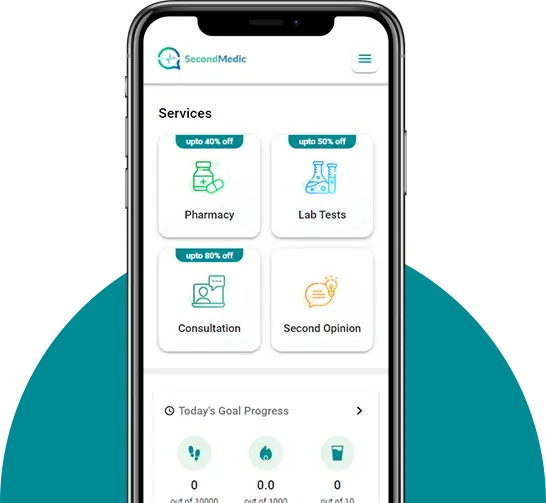- Published on: Sep 16, 2023
- 4 minute read
- By: Secondmedic Expert
The Future Of Healthcare: How Telehealth Is Revolutionizing Physical Therapy
In recent years, the healthcare landscape has been undergoing a significant transformation, with remote healthcare delivery technology playing a pivotal role in reshaping how medical services are delivered. One of the most promising developments is the integration of telehealth into various healthcare specialties, including physical therapy. This revolutionary approach to healthcare is changing the way patients receive therapy, making it more convenient and accessible than ever before.
The Rise of Telehealth in Physical Therapy
Physical therapy is an essential component of healthcare, aiding individuals in recovering from injuries, managing chronic conditions, and improving their overall mobility and well-being. Traditionally, physical therapy involves in-person sessions with a therapist or clinician. However, telehealth has opened up new possibilities by allowing patients to access physical therapy services remotely.
Telehealth vs. Telemedicine: Understanding the Difference
Before delving deeper into the impact of telehealth on physical therapy, let's clarify some key terminology:
What is the difference between telemedicine and telehealth technology?
Telemedicine and telehealth are often used interchangeably, but they have distinct meanings:
- Telemedicine: Telemedicine refers to the use of technology to provide remote clinical healthcare services. It primarily focuses on the diagnosis and treatment of medical conditions, including consultations, prescription management, and follow-up care. Telemedicine typically involves interactions between healthcare providers and patients.
- Telehealth: Telehealth is a broader term that encompasses telemedicine but extends beyond clinical care. It includes a wide range of healthcare services and activities, such as education, monitoring, and therapy, making it applicable to physical therapy as well.
Telehealth in Physical Therapy: How Does it Work?
Telehealth technology is transforming physical therapy in several ways:
1. Remote Consultations: Patients can now consult with physical therapists through video calls, eliminating the need for in-person visits. This is particularly beneficial for patients with mobility limitations or those residing in remote areas.
2. Home Exercise Programs: Physical therapists can design personalized exercise regimens and send them to patients digitally. Patients can then follow these programs at home, with therapists monitoring their progress remotely.
3. Real-time Feedback: During video sessions, physical therapists can observe patients performing exercises and provide real-time feedback, ensuring proper form and technique.
4. Monitoring and Progress Tracking: Telehealth platforms often include tools for tracking patients' progress and adherence to treatment plans. This data helps therapists make adjustments as needed.
Telehealth vs. Digital Health: Clarifying the Distinction
While telehealth focuses on remote healthcare delivery, digital health encompasses a broader range of technologies and applications aimed at improving health outcomes. Digital health solutions include wearable fitness trackers, health apps, and electronic health records, among others. Telehealth is just one facet of the digital health ecosystem.
Exploring Telemedicine Types
Now, let's address some common types of telemedicine:
1. Synchronous Telemedicine: This type involves real-time interactions between healthcare providers and patients, such as video calls or phone consultations.
2. Asynchronous Telemedicine: Asynchronous telemedicine allows patients to upload their medical information and questions to a secure platform. Healthcare providers review these submissions and respond at their convenience.
In conclusion, telehealth is revolutionizing physical therapy by breaking down geographical barriers, increasing accessibility, and enhancing the overall patient experience. As technology continues to advance, we can expect even more innovative solutions to emerge, further improving the delivery of physical therapy services. The future of healthcare is undoubtedly digital, and telehealth is leading the way.
The Impact of Telehealth on Physical Therapy: A Comprehensive Exploration
The integration of telehealth into physical therapy is a pivotal development that has far-reaching implications for patients, healthcare providers, and the broader healthcare system. This article delves into the profound impact of telehealth on physical therapy, providing a comprehensive exploration of its benefits, challenges, and the evolving landscape of remote rehabilitation.
The Changing Landscape of Physical Therapy
To appreciate the significance of telehealth in physical therapy, it's essential to understand the evolving landscape of this field. Traditionally, physical therapy involved in-person consultations and treatment sessions. Patients would visit a physical therapist's clinic or a healthcare facility regularly to receive personalized care. While this approach has been effective, it has limitations in terms of accessibility, convenience, and continuity of care.
Telehealth: A Paradigm Shift in Physical Therapy
Telehealth in physical therapy represents a paradigm shift in how rehabilitation services are delivered. It harnesses the power of technology to break down traditional barriers and offers numerous advantages:
1. Accessibility: Perhaps the most significant advantage of telehealth in physical therapy is its ability to reach patients in remote or underserved areas. Individuals who previously had limited access to specialized rehabilitation services can now connect with skilled physical therapists through telehealth platforms.
2. Convenience: Telehealth eliminates the need for patients to commute to therapy sessions. This is particularly beneficial for individuals with mobility challenges, those living in rural locations, or those with busy schedules. Patients can receive care from the comfort of their homes or workplaces.
3. Continuity of Care: Telehealth promotes continuity of care by enabling patients to maintain their rehabilitation routines without disruptions caused by travel or scheduling conflicts. This consistent engagement can lead to more effective outcomes.
4. Personalization: Physical therapists can tailor exercise programs and treatment plans to each patient's specific needs and goals. Through video consultations, therapists can assess patients' movements and progress in real time, ensuring that exercises are performed correctly.
5. Real-time Feedback: During virtual sessions, therapists can provide immediate feedback and guidance. This real-time interaction enhances the quality of care and helps patients make necessary adjustments to their exercises.
6. Progress Tracking: Telehealth platforms often include tools for monitoring and tracking patients' progress. Data on exercise compliance, pain levels, and functional improvements allow therapists to make data-driven decisions and adjust treatment plans accordingly.
Challenges and Considerations
While telehealth in physical therapy offers numerous benefits, it also comes with challenges and considerations:
1. Technology Barriers: Some patients may lack access to the necessary technology or have limited digital literacy, making it challenging for them to engage in telehealth services.
2. Privacy and Security: Ensuring the privacy and security of patient data is crucial. Telehealth platforms must adhere to strict standards and encryption protocols to protect sensitive medical information.
3. Licensing and Regulation: The practice of telehealth in physical therapy is subject to state-specific licensing and regulatory requirements. Physical therapists must navigate these regulations to provide care across state lines.
4. Physical Examination Limitations: While telehealth enables visual assessments, it may not fully replace hands-on physical examinations in some cases. Physical therapists must adapt their assessment techniques accordingly.
Evolving Landscape
The adoption of telehealth in physical therapy has gained momentum, especially in response to the COVID-19 pandemic. Many healthcare systems, insurers, and policymakers have recognized its value and have taken steps to support its integration into mainstream healthcare. As the telehealth landscape continues to evolve, several trends are emerging:
1. Hybrid Models: Some physical therapy practices are adopting hybrid models, combining in-person and telehealth services to provide patients with flexibility and choice.
2. Advanced Technology: Technological advancements, such as augmented reality (AR) and virtual reality (VR), are being explored to enhance the telehealth physical therapy experience. These technologies can create immersive rehabilitation environments.
3. Interdisciplinary Care: Telehealth facilitates collaboration between physical therapists, physicians, and other healthcare professionals. This interdisciplinary approach enhances patient care by addressing multiple aspects of health simultaneously.
4. Patient Education: Telehealth allows for more extensive patient education. Patients can access resources, instructional videos, and digital tools to better understand their conditions and treatment plans.
5. Remote Monitoring: The integration of wearable devices and remote monitoring technology enables physical therapists to track patients' vital signs, movements, and progress outside of scheduled sessions.
Conclusion
Telehealth is revolutionizing physical therapy by making rehabilitation services more accessible, convenient, and patient-centric. While challenges exist, the benefits of telehealth in physical therapy are undeniable, and the evolving landscape promises even more innovative solutions to enhance patient care. As the future of healthcare becomes increasingly digital, telehealth is at the forefront, reshaping how individuals recover from injuries, manage chronic conditions, and improve their overall quality of life.
Read FAQs
A. Telemedicine refers to the use of technology to provide remote clinical healthcare services, focusing on the diagnosis and treatment of medical conditions through virtual consultations and interactions.
A. Telehealth is a subset of digital health, specifically addressing remote healthcare delivery and patient-provider interactions. Digital health encompasses a broader range of health-related technologies and applications.
A. Two common types of telemedicine are: - Synchronous Telemedicine: Real-time interactions between healthcare providers and patients. - Asynchronous Telemedicine: Patients submit their medical information and questions for healthcare providers to review and respond to at their convenience.









